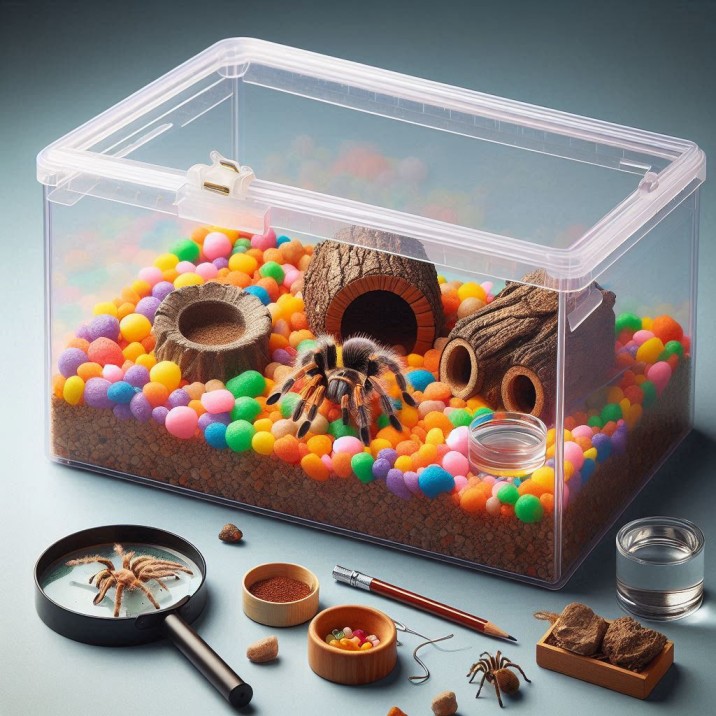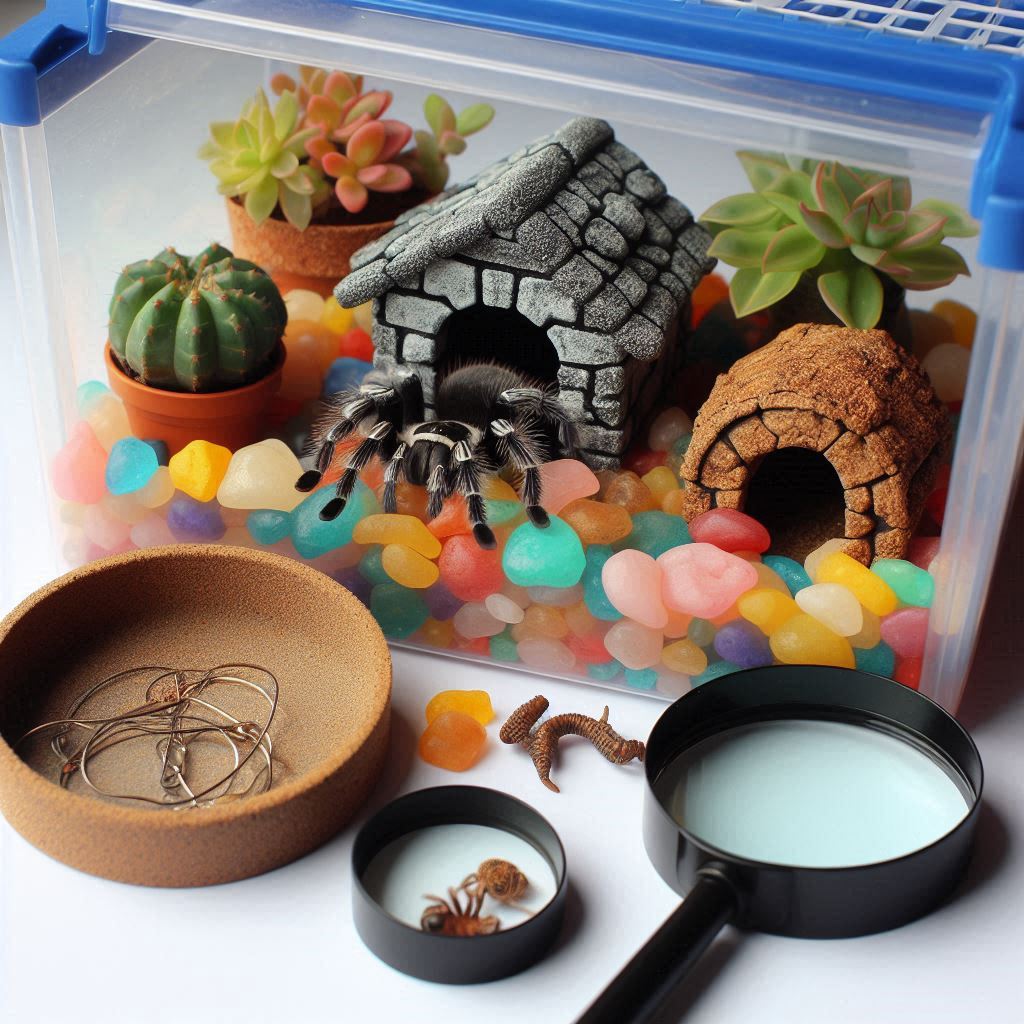Tarantulas are fascinating creatures that many people enjoy keeping as pets. If you’re new to the world of tarantula keeping, you might have come across the term “sling.” A tarantula sling is simply a baby tarantula. Just like any other baby, slings have special needs, especially when it comes to their enclosures. In this article, we’ll dive deep into everything you need to know about creating the perfect tarantula sling enclosure. Whether you’re a seasoned arachnid enthusiast or a curious newcomer, this guide will provide you with all the essential information.

Introduction to Tarantula Slings
Table of Contents
What is a Tarantula Sling?
A tarantula sling is a young tarantula that has recently hatched from its egg sac. Slings are tiny, delicate, and require special care to ensure they grow into healthy adults.
Why is a Proper Enclosure Important?
A proper enclosure is crucial for the health and well-being of your sling. It provides a safe environment where they can thrive. Without the right setup, slings can be susceptible to stress, dehydration, and even death.
Choosing the Right Tarantula Sling Enclosure
Size and Material
When selecting an enclosure for your tarantula sling, size and material are key factors to consider.
Size
The enclosure should be small enough to keep the sling safe but large enough to allow it to move around comfortably. A general rule is to choose an enclosure that is 3-4 times the size of the sling’s leg span.
Material
Plastic containers are often recommended because they are easy to clean and maintain. They also retain humidity better than glass.
Ventilation
Proper ventilation is essential to prevent mold and ensure a healthy environment. Small holes can be drilled into the sides of the plastic container to provide adequate airflow.
Setting Up the Tarantula Sling Enclosure
Substrate
The substrate is the material that lines the bottom of the enclosure. It helps maintain humidity and provides a burrowing medium for the sling.
Types of Substrate
- Coconut fiber: Retains moisture well and is safe for slings.
- Vermiculite: Excellent for maintaining humidity.
- Topsoil: Avoid using soil with fertilizers or pesticides.
Decorations and Hides
While slings don’t require elaborate decorations, providing a small hide, such as a piece of cork bark or a small plastic plant, can make them feel secure.
Water Source
Slings need access to water, but a water dish can be too large and pose a drowning risk. Instead, mist one side of the enclosure lightly to provide drinking water.
Maintaining the Enclosure
Humidity
Humidity levels should be monitored and maintained according to the species’ requirements. Most slings do well with humidity levels between 70-80%.
Temperature
Keep the enclosure at a stable temperature, typically between 75-80°F. Avoid placing the enclosure in direct sunlight or near heat sources.
Cleaning
Regular cleaning is essential to prevent mold and mites. Spot clean as needed and replace the substrate every few months.
Feeding Your Tarantula Sling
What to Feed
Slings can be fed small prey items like pinhead crickets, fruit flies, or pre-killed prey.
Feeding Schedule
Feed your sling every 2-3 days. Remove any uneaten prey within 24 hours to prevent mold growth.
Handling and Safety
Should You Handle Your Sling?
Handling slings is generally not recommended due to their delicate nature. If you need to move your sling, use a soft brush or a small container.
Safety Precautions
Always wash your hands before and after handling the enclosure to prevent the spread of bacteria.
Troubleshooting Common Issues
Dehydration
If your sling appears lethargic or its abdomen is shriveled, it may be dehydrated. Increase humidity and ensure water is available.
Mold
Mold can be a problem in high-humidity environments. Improve ventilation and remove any moldy substrate.
Table of Information
| Aspect | Details |
|---|---|
| Enclosure Size | 3-4 times the sling’s leg span |
| Material | Plastic |
| Ventilation | Small holes for airflow |
| Substrate | Coconut fiber, vermiculite, or topsoil |
| Humidity Level | 70-80% |
| Temperature Range | 75-80°F |
| Feeding Frequency | Every 2-3 days |
| Suitable Prey | Pinhead crickets, fruit flies, pre-killed prey |
Conclusion
Creating the perfect tarantula sling enclosure is essential for the health and well-being of your baby tarantula. By following the guidelines in this article, you can ensure that your sling has a safe, comfortable, and healthy environment to grow in. Remember, each species may have specific needs, so always research the particular requirements of your tarantula sling.
FAQs
1. How often should I clean the tarantula sling enclosure?
It’s best to spot clean as needed and replace the substrate every few months to maintain a healthy environment.
2. Can I use sand as a substrate for my tarantula sling?
No, sand is not suitable as it does not retain moisture well and can cause dehydration.
3. How can I tell if my sling is dehydrated?
A dehydrated sling may appear lethargic with a shriveled abdomen. Increase humidity and ensure water is available.
4. Do tarantula slings need a heat lamp?
Most slings do not require a heat lamp. Maintaining room temperature between 75-80°F is usually sufficient.
5. Can I house multiple slings together?
It’s not recommended to house multiple slings together as they can become cannibalistic. Each sling should have its own enclosure.

